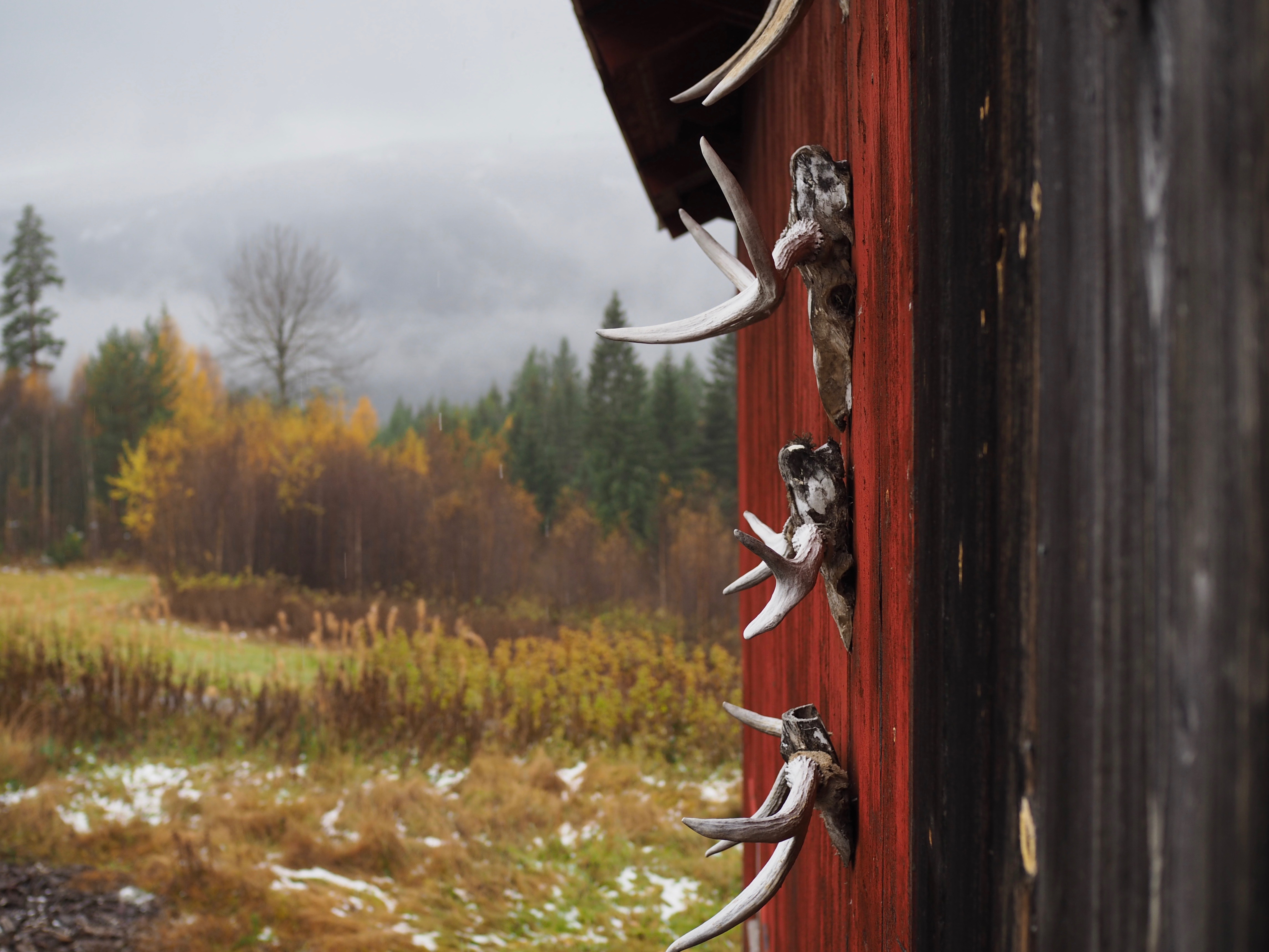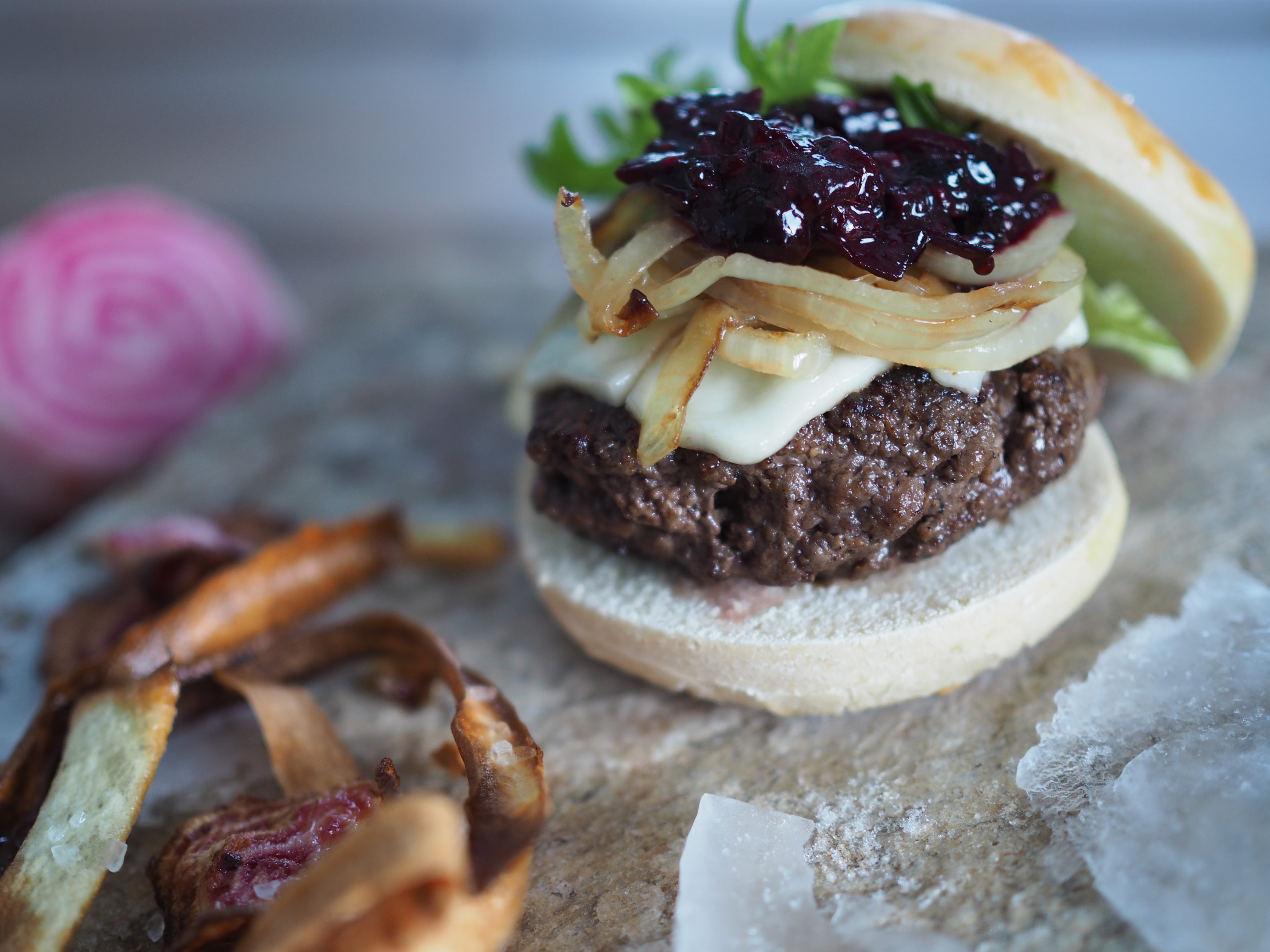
If freezer’s could speak, oh the stories they would tell. When you live in the country, especially in mountain country, you tend to rely very heavily on your preservation methods. And as I rummaged through our freezer full of plastic bags with pureed squash and frozen fruits, and last season’s lamb, fish and beef, I pulled out a couple of perfectly wrapped bundles with ELG scribbled on the outside. The brown butcher paper meticulously folded and sealed, made them look like little gifts. But then again, that’s what nature is. A gift.
Norwegian Elg, sometimes referred to as elk in English, is in actual fact moose, and is known fondly in Norway as the King of the Forest (Skogens Konge). And it’s no wonder, since moose have made their home in Norway for a long time and their very being is a symbol of the wild, and the majesty, and dignity of the landscape. Norwegians love their elg, and have a high respect for the animal, whether it be observing them in their natural habitat or hunting responsibly.
The moose is said to have been one of the first mammals to arrive in Norway after the ice age. When the great ice sheet covering Norway began to melt, moose were quick to take advantage of the areas which emerged. The first traces of moose were found in the eastern parts of Norway and show that they had come from Denmark and Southern Sweden. The oldest trace of moose in Norway were antlers found in a marsh at Fluberg, Oppland. The antlers are dated to be approximately 10,300 years old. (NTNU)
(more…)

 Following on from my story about Moose Hunting in Norway (Elgjakt), here is a recipe for elggryte, a traditional moose stew utilising the flavors of the forest. Gryte means pot in Norwegian, and what better way to cook in the colder months than with everything stewing together in one pot.
Following on from my story about Moose Hunting in Norway (Elgjakt), here is a recipe for elggryte, a traditional moose stew utilising the flavors of the forest. Gryte means pot in Norwegian, and what better way to cook in the colder months than with everything stewing together in one pot.


 The tree branch cracks as my shoe presses firmly against it, pushing it deeper into the forest floor. The noise, though quick to pass, makes me hold my breath as I freeze every part of myself in anticipation of whether that one step will be enough to grab the attention of the mighty elg, moose, as it stands firmly planted atop the mossy floor. Movements must be feather-like and graceful. The silence and passage of time evoke a sense of kinship with the animal. Nothing is rushed. Nothing is taken for granted. This is a journey. And this journey begins long before such an encounter.
The tree branch cracks as my shoe presses firmly against it, pushing it deeper into the forest floor. The noise, though quick to pass, makes me hold my breath as I freeze every part of myself in anticipation of whether that one step will be enough to grab the attention of the mighty elg, moose, as it stands firmly planted atop the mossy floor. Movements must be feather-like and graceful. The silence and passage of time evoke a sense of kinship with the animal. Nothing is rushed. Nothing is taken for granted. This is a journey. And this journey begins long before such an encounter.







 Sprouts of stinging nettles and wood nettles (brennesle) have unearthed across our farm following an indecisive spring which left plenty of water and a sudden transition from frosty earth to vibrant patches of green. In only a few short days, they have begun a siege to take over; relentless, swift and full of surprise positioning. While their dominance and sting may prompt many to take up battle, it is their nutrition and use in cooking which have many people, including myself, welcome the voracious growing with open arms.
Sprouts of stinging nettles and wood nettles (brennesle) have unearthed across our farm following an indecisive spring which left plenty of water and a sudden transition from frosty earth to vibrant patches of green. In only a few short days, they have begun a siege to take over; relentless, swift and full of surprise positioning. While their dominance and sting may prompt many to take up battle, it is their nutrition and use in cooking which have many people, including myself, welcome the voracious growing with open arms.
